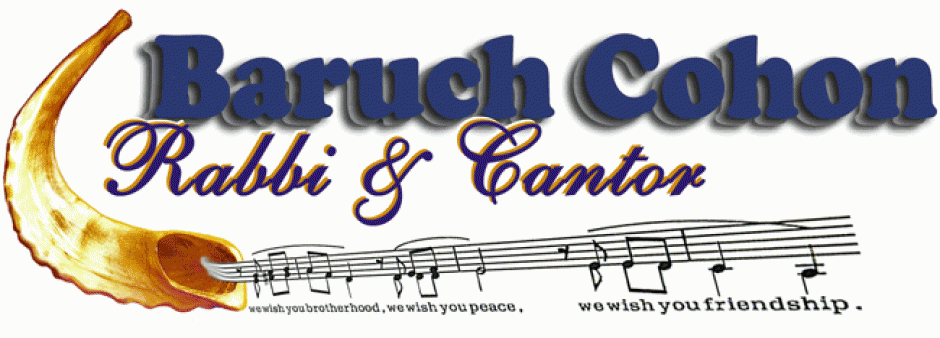KNOW THE LAW – AND UNDERSTAND IT? – Khukas – Numb.19:1—22:1 – by Rabbi Baruch Cohon
Torah law comes in three varieties. One is called eydos – ordinances. A second one is called khukim – decrees. And the third is called mishpatim – judgments.
We define eydos as rules of life that would be obvious without even writing them down. Frequently they are compared to accepted customs that acquire the force of law. Wearing clothes, for example.
Mishpatim are logical conclusions from reality, formalized into law. The word mishpat means “justice.” To be fair, to be just, we must follow these laws. Like the Torah’s admonition that a murderer shall not be put to death until he stands trial. Make sure we have the right one.
Khukim – decrees, or statutes, present a different challenge. They seem to defy human intelligence. Since this week’s reading is called Khukas we have a perfect opportunity to explore some puzzling commandments. One which opens our reading describes the sacrifice of the Red Heifer, an offering which has no stated purpose but is described in full detail. We are told that this offering took place only nine times in all Jewish history, and we still don’t know why. But it is anticipated for the tenth (and last?) time when the Messiah arrives. Along with that sacrifice comes the law of tum’ah – contamination – applied to the priest who gathers the cow’s ashes. He sprinkles the sacrifice with holy water, thus purifying it. But he himself becomes contaminated – therefore unable to join in any normal activity – and remains so until nightfall. So this is a case where the same action “purifies the contaminated, and contaminates the pure.”
Tum’ah becomes more serious when a human being comes in contact not with a dead animal but a dead human body. Now it lasts a week. And if the death takes place in a tent, or if the body is brought into the tent, everything in the tent is contaminated and must be sprinkled with cleansing water, as of course the living humans too. In today’s Jewish world the mikvah substitutes for the ancient sprinkle. Proximity to death still contaminates, so a Jewish cemetery will have water faucets available for visitors to use. And returning from the funeral to enter a house of mourning, we prepare a pitcher and basin on the porch for our guests.
Yet the riddle remains. How do we explain the concept of ritual contamination? This law is not based on logic. Don’t argue. Just do it!
A decree or a statue, therefore, is a law passed down from above by absolute authority, whether human or Divine. In Chapter 30 we will read: “These are the decrees that G-d commanded Moses.” And later in the Book of Joshua we see how he signed a treaty with the people binding their agreement to dispose of all their idols, and ”made it a statute and a law.”
All through this reading we will find the imminence and effect of losing treasured people. First it is Miriam who dies. We read simply that she dies and gets buried. We don’t know who buried her, or what kind of mourning the people did. But we know they felt her loss. In her honor, says our Midrash, a miraculous well followed the Israelite people all through their 40 years in the desert. As soon as she died, they had no water to drink. That’s what they complained about.
Soon thereafter, they lose Aaron. He and his son Elazar climb the mountain, he gives Elazar his priestly robe, and his life ends. He is buried on the mountain, and the people mourn him for 30 days.
Why 30 days? Significantly, we will read no law about 30 days of mourning. Yet we still observe it. Granted, it is now just the first of 11 months of Kaddish, but the first month is the deepest, starting with the week of shiva when the mourners traditionally stay at home and refrain from work or other regular activities while they accept sympathy calls; and proceeding through the rest of the 30 days when it is customary not to visit the grave or to partake in entertainment. Aaron was a great man in our history, but memorializing him took no different form from how we honor each of our departed ever since. As we will read in Deuteronomy, Moses himself was also mourned by the entire people for 30 days.
We need these various kinds of laws – ordinances, judgments, decrees — to help us relate to each other. They teach us to respect those who live by those laws, to support those who teach and enforce those laws and to share an ordered society.
Dealing with death is different. No law we can write or even understand limits any one lifetime. Human beings live and die by a decree we cannot know. All we can do for those we love while they are with us, is to help them live. After that, we can honor good people’s memories as we have always done — from the heart.


Thank you, Rabbi, for a very interesting expanation. I was familiar with all of the laws, but, as we all must I lived through Tumah.
When I lost my dear father I remember we sat on wooden boxes for discomfort. He had been very active in our Shul and our house was full every evening. That was in 1947.
My husband passed away in 2001, and although we lived in Tucson he was buried in Seattle, Wa. We sat Shiva at my older son;s home. I scoured all over Seattle, including the Orthodox places to find wooden boes without success. Needless to say, I was upset.
Whatever happened to that custom?
.
Gladys,
The custom is still with us. Many families substitute low chairs for boxes, sometimes just removing cushions so the mourners sit on a low level while guests express their sympathy. Otherwise we can use plain wooden crates that markets use and dump. Most important is the sentiment expressed in the words “HaMakom y’nakhem eskhem” — “May the Eternal comfort you.”